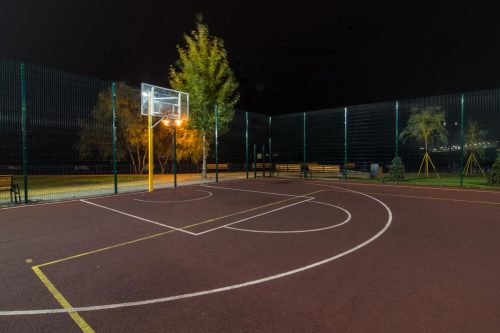Watching an experienced surfer ride a wave onto the shore is an amazing experience. You may have seen someone do it and wondered if surfing is easy or hard to learn. We've heard from the novice to experienced surfers about learning to surf and can tell you all about the journey.
Learning the basic surfing moves is fairly easy, but it becomes progressively more difficult as you advance. While riding a small wave can be done by almost anyone, learning advanced moves such as the "sushi roll" is extremely difficult. To make learning to surf easier, work on the following steps:
- Start in good shape.
- Pick the right board and equipment.
- Look for the best surfing conditions.
- Learn to catch a wave.
- Master the pop-up.
- Keep practicing.
If you want to see if you have what it takes to learn to surf, keep reading, and we'll dive deeply into the best way to shorten your learning curve.
![Surfer on blue ocean wave in the tube getting barreled, Is Surfing Easy or Hard to Learn? [Here Are the 6 Steps to Take]](https://fitseer.com/wp-content/uploads/2020/11/Is-Surfing-Easy-or-Hard-to-Learn-Here-Are-the-6-Steps-to-Take.jpg)
1. Start In Good Shape
You don't have to spend hours training in the gym to learn to surf, but you should be in pretty good physical condition. If you are overweight and out of shape, you may still be able to learn to surf, but it will be much more difficult. Ideally, you should be able to do 45 to 60-minutes of vigorous exercise.
It would help if you also were a strong swimmer. If you're not quite this fit yet, you might want to spend a few weeks working out before you start learning to surf.
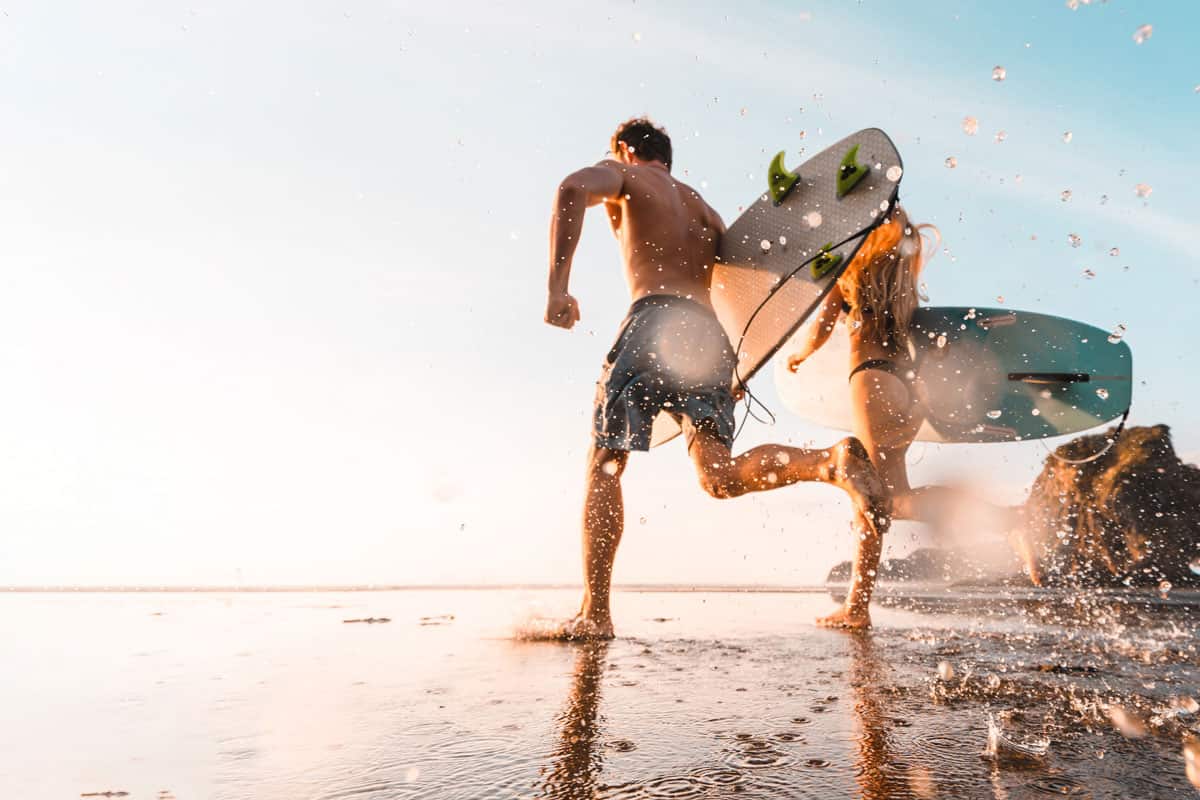
2. Pick The Right Board And Equipment
It may be tempting to start with a sleek fiberglass surfboard, but if you're just learning, you will have more success with a long foamboard. The foamboard provides more buoyancy and is easier for beginners to pop up onto. You'll be able to learn the basics more quickly and move on to a fiberglass board.
As your skills progress, you'll want a fiberglass board because it has more maneuverability. The more advanced skills can only be done on a shorter, fiberglass surfboard.
Click here to check out this foam surfboard on Amazon.
In addition to a board, you'll need a leash and string cord. You'll hook the leash around your ankle and use the string cord to attach the other end to your board. When you fall off, and you will, you don't want your expensive surfboard drifting out into the ocean.
Click here to see this board leash on Amazon.
After you have your board and leash, you'll need some wax for your surfboard. Giving your board a good base coat and a top coat of wax will help you maintain traction when you're standing on the board.
Click here to check out surfboard wax on Amazon.
If you're going to be surfing in warm water during the summer, any bathing suit or board shorts will do to wear. However, if you're going to be surfing in colder water, you'll need a wetsuit to keep you warm. Wetsuits are rated based on the thickness of the neoprene.
The colder the water, the heavier the neoprene needs to be. Most wetsuit manufacturers publish charts that tell you what your neoprene should be rated based on the water temperature where you'll be surfing.
Click here to find wetsuits on Amazon.
3. Find The Best Surfing Conditions
If you know any local surfers, they are the best resource for finding good surfing conditions. If not, you should look for small waves and very light winds. Save the big waves for when you have more experience. When you're first learning, you'll want to practice on small, breaking waves.
4. Learn To Catch A Wave
Once you have the right equipment and good conditions, you're ready to start learning to surf. Catching a wave is the point where the wave meets the surfboard and starts pushing it in towards the shore. You want to catch a wave either before or after it breaks.
As a beginner, you'll want to catch a wave after it breaks. You'll be aiming for the part of the wave that is right in front of the break. It will take time and patience to learn when you've truly caught a wave. Paddle out past the area where the waves are breaking. Watch the waves as they are approaching. Pick one, and paddle into it as it approaches.
You'll know you've caught it when you can ride it all the way to shore. At first, you'll want to ride it in lying down. Don't try to stand on the surfboard before you've mastered paddling out and catching a wave.
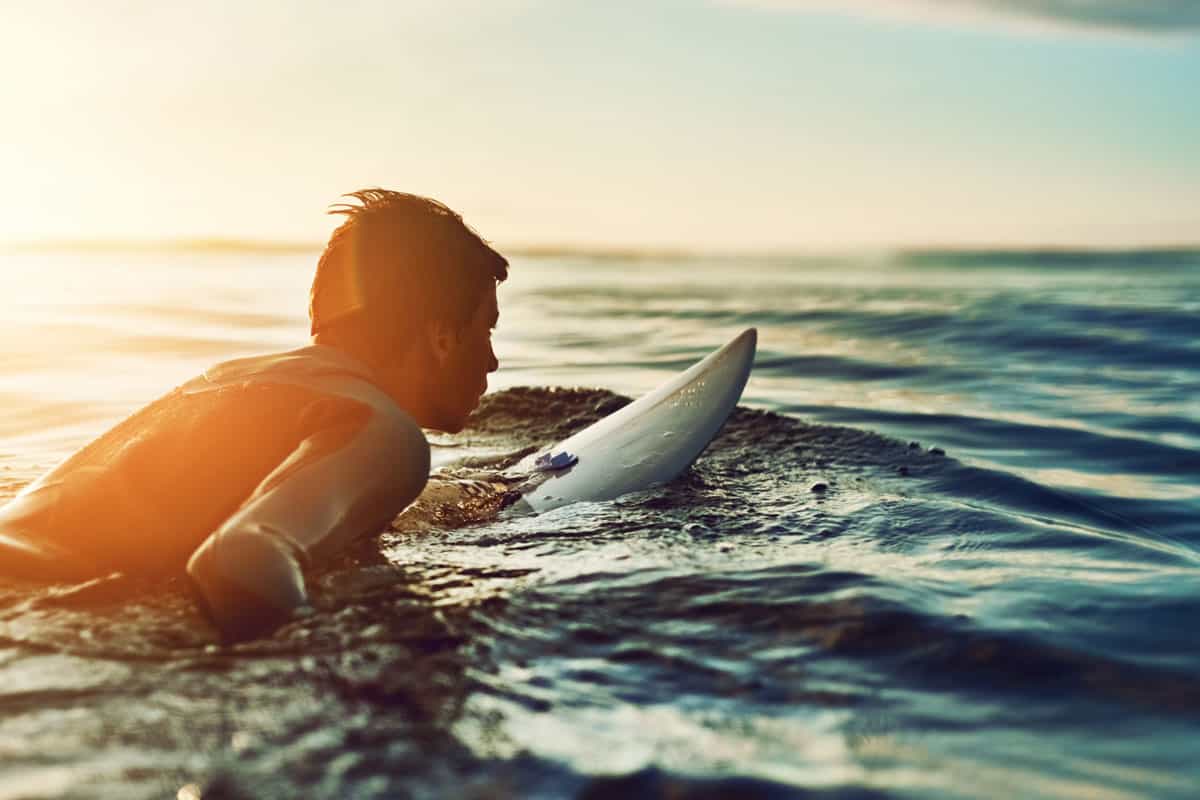
5. Master The Pop Up
Once you know how to catch a wave, you'll need to be able to pop up to a standing position on your surfboard. Before you try this in the ocean, work on it on the sand. From a lying position, come up into a plank position. Next, step your back foot into position. You'll want to try this a few times to see which foot feels better in the back. Either is fine, just use whichever feels natural for you.
Then, with your hands still on the board, step your front foot up between your hands. Once you feel steady, lift your hands and come into a crouching position. From this crouching position, stand up when you feel balanced. Keep your knees bent and look in the direction you want to go.
You don't even need to use your surfboard to practice popping up. You can practice on the sand or even in your living room. Once you're comfortable with the sequence, try it in the water.
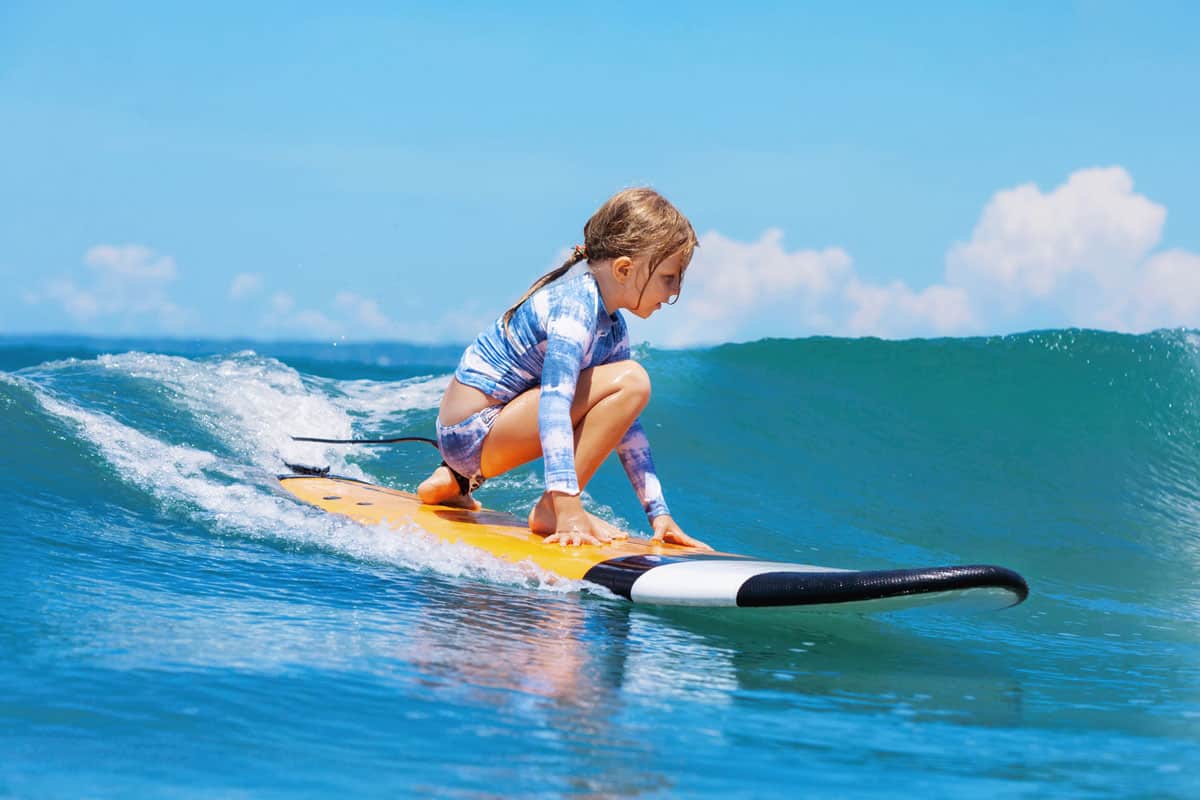
6. Keep Practicing
Surfing isn't a sport you can learn in one or two sessions. You'll have to put in a lot of practice, but once you've caught and ridden your first wave, even a small one, you'll be hooked. Keep practicing, and pretty soon, you'll be surfing with the best of them.
How Long Does It Take To Learn To Surf?
It depends on a lot of different factors, but in general, you should be able to catch a wave and ride it in a few weeks to a few months. How long and how often you practice will affect how long it takes. If you're out there every day for several hours, you'll pick it up quickly. If you can only practice on the weekends, it will probably take a little longer.
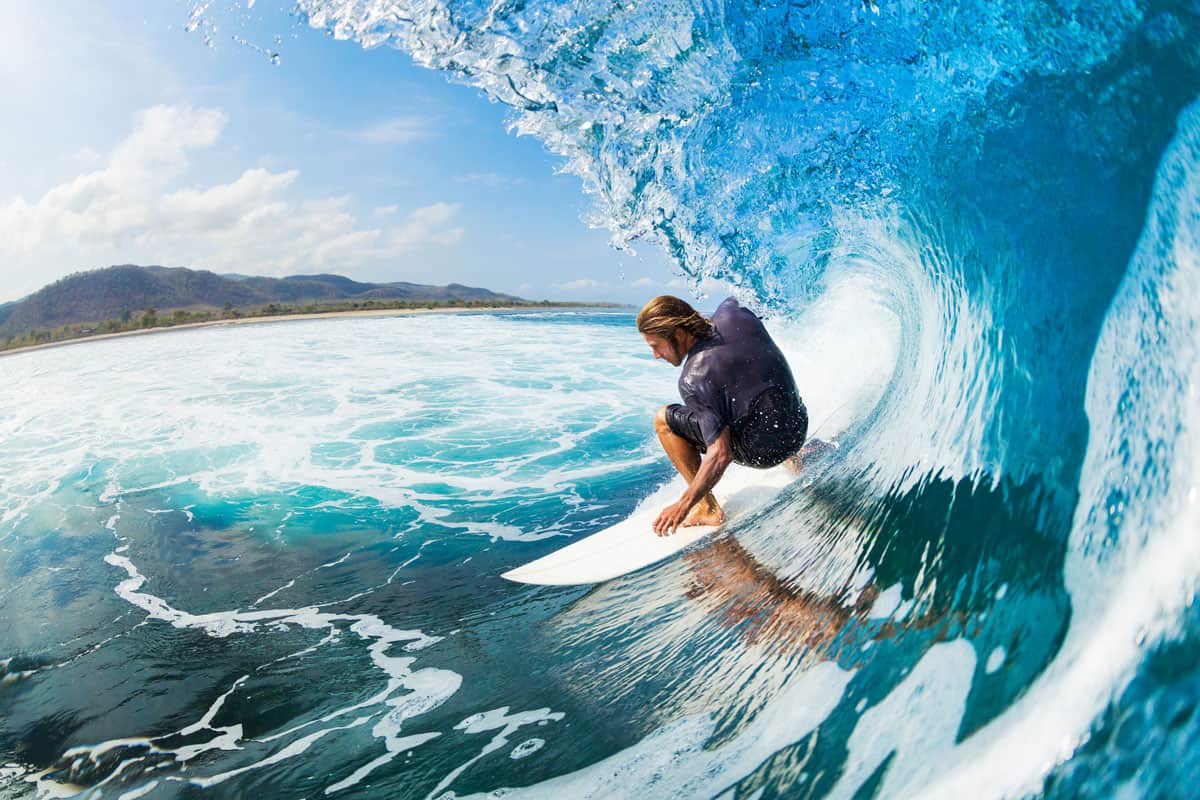
Is It Easier To Surf On A Long Board Or Short Board?
It's far easier to learn to surf on a longboard. Longboards offer more stability and buoyancy. However, as you become a better surfer, you'll want to switch to a shortboard. Shortboards have more maneuverability and superior performance.
What Do You Need To Know Before Surfing?
Most importantly, before you start surfing, you need to know how to swim. Beyond that, it depends on how you plan to learn. If you're teaching yourself, you'll need to know what equipment you need, how to paddle out, catch a wave, and pop up to a standing position on your board. You won't have these steps mastered, of course, but you'll need to know what to practice.
If you're taking lessons, you can just show up and learn as you go. Surf schools will have the equipment you can rent as part of your lesson, and you'll just need to follow your instructor's lead.
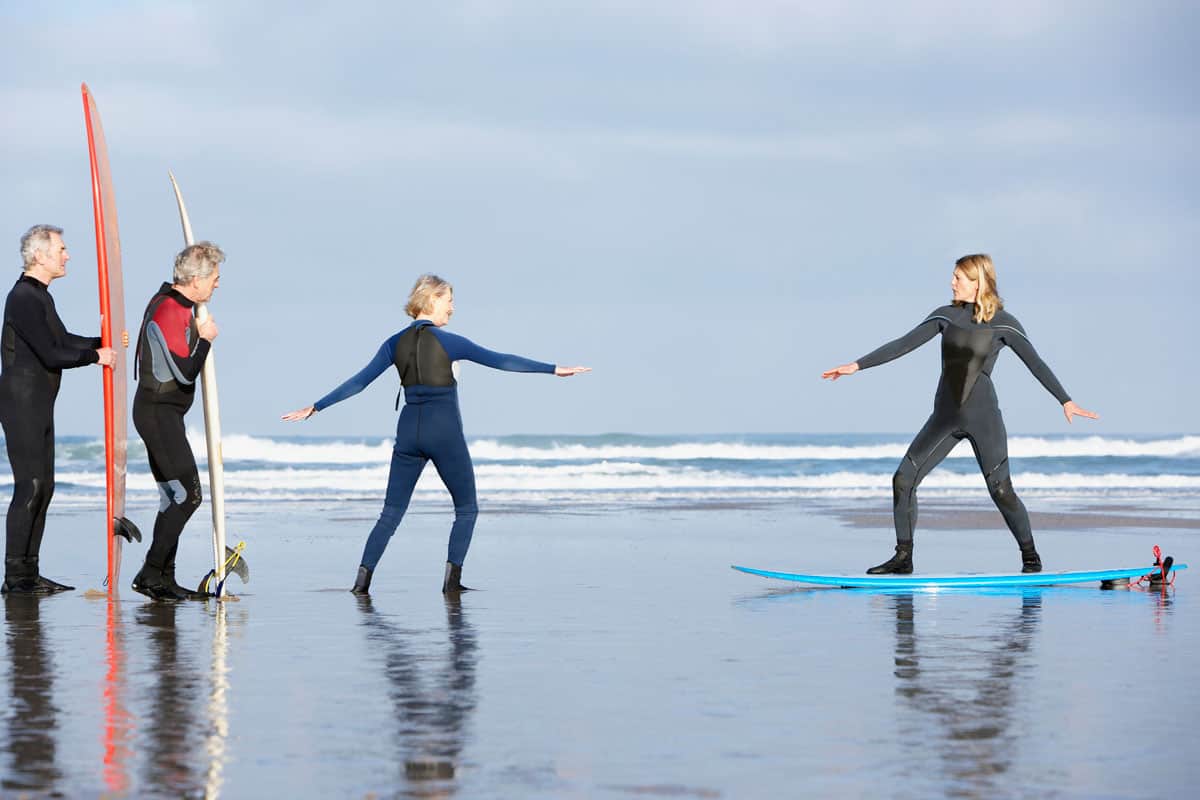
What Is The Hardest Part Of Surfing?
Beginning surfers joke that the hardest part of surfing is the part you're learning. However, once they've learned, many surfers agree that the hardest part of surfing is catching a wave. Successfully catching a wave is a combination of experience and intuition, but even experienced surfers miss the mark at times.
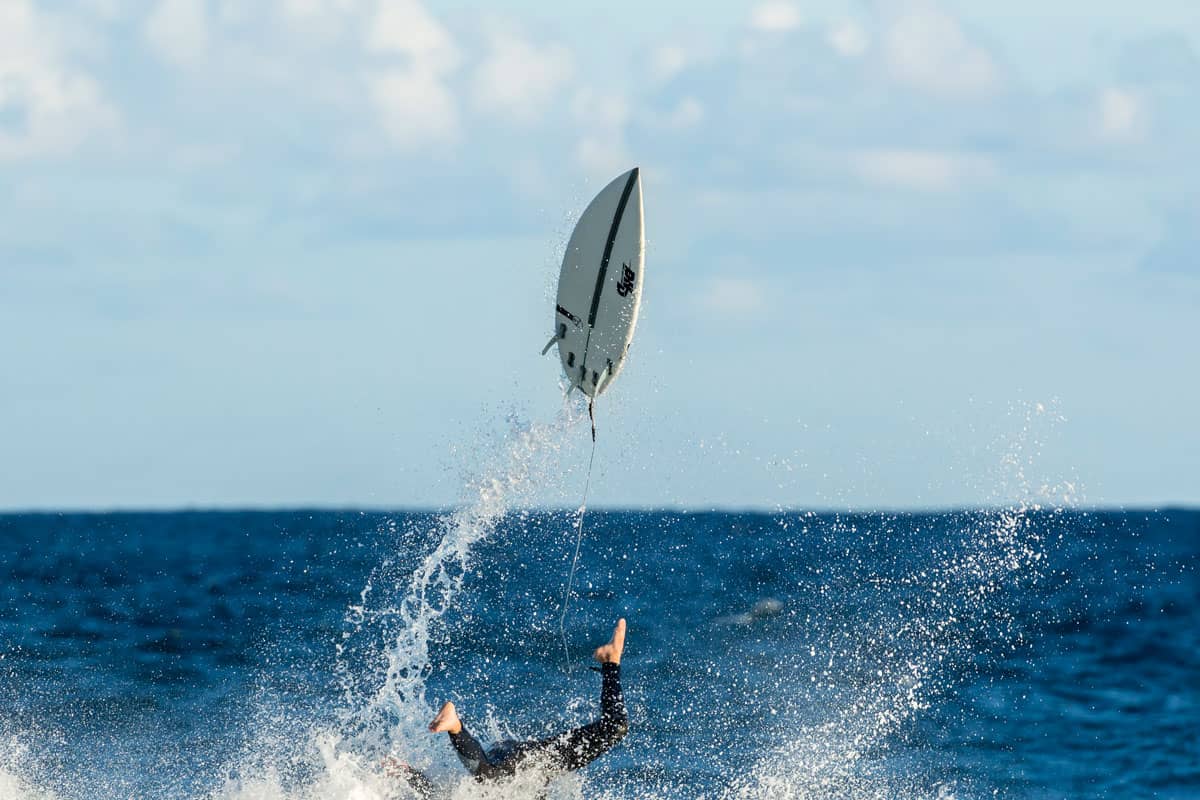
In Conclusion
Surfing is one of the most complicated sports to learn. It requires balance and coordination, and it's done on unpredictable waves. There's no doubt that it will take hard work and perseverance to learn. Once you learn, though, you can enjoy a lifetime of riding the waves.

https://fitseer.com/types-of-surfing/
https://fitseer.com/wear-garmin-apple-watch-or-fitbit-while-surfing/





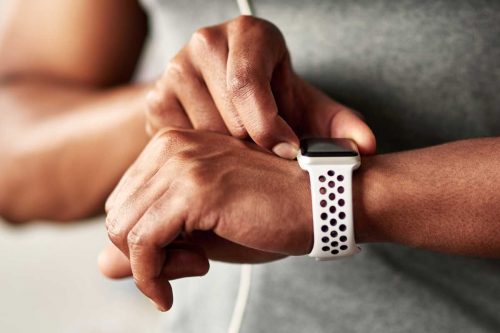
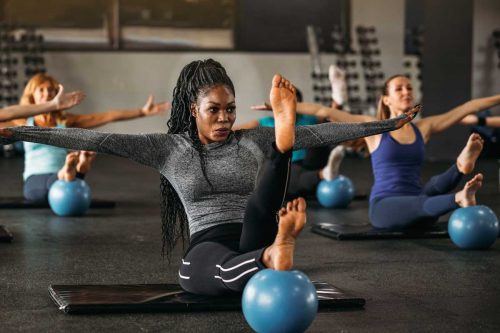
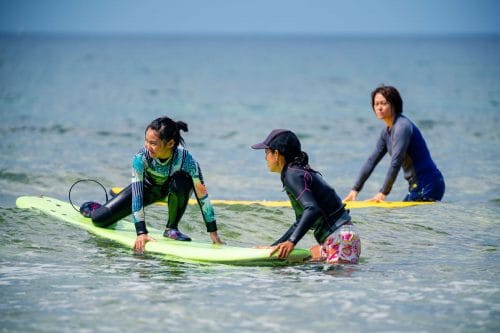

![Read more about the article How Much Does It Cost to Go Bowling? [and Should You Buy Your Own Gear]](https://fitseer.com/wp-content/uploads/2020/10/Close-up-view-score-monitor-in-bowling-club-500x333.jpg)
